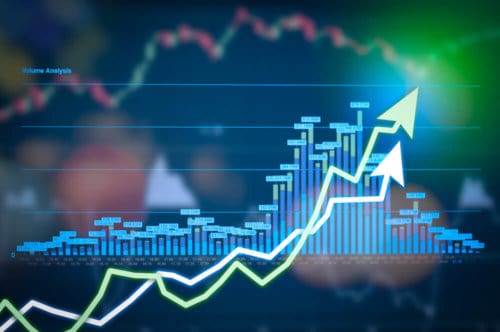Join Our Telegram channel to stay up to date on breaking news coverage
In the first half of 2022, the investment landscape underwent a noticeable shift. This was mainly due to a substantial rise in interest rates and a continuous inflation rate surge. However, stocks did not escape these changes. Significant “repricing” took place in the stock market by June 2022. As a result, the Standard & Poor’s 500 stock index, a key indicator of U.S. equities’ performance, fell into a bearish market. This represents a 20% decline from its peak value.
In an effort to reduce inflation, the Federal Reserve (Fed) initiated a major policy change in the early part of the year. The Fed’s actions are intended to slow down economic growth. However, they do not aim to cause a recession. Nevertheless, the Fed’s revised policy appears to have had a significant impact on the wider interest rate environment. Through much of the year, bond yields showed an upward trend.
Rising interest rates have changed the landscape for equity investors, who had grown accustomed to an environment in which interest rates were low for a long time. So, what is the relationship between the interest rate and stock markets? What does this mean to your equity portfolio?
The Fed’s former “easy money” policy
The Fed’s “easy money” policy was in place for a period of two years, starting in early 2020. It also lasted for a large part of the previous decade. This included maintaining the fed funds rates at a low level and increasing its bond market holdings. As COVID-19 was first published in February and March 2020, the Fed took important easing measures. It reduced the Fed funds target rate to close to 0% and increased its holdings in Treasury and mortgage-backed securities.
This resulted in low interest rates across the bond market. Risk assets became more attractive. This was due to the fact that fixed income investments didn’t offer attractive returns for investors.
Investors further out on the risk spectrum viewed the Fed’s “easy money” policy favorably. Eric Freedman is the chief investment officer at U.S. Bank. “Supportive monetary policy was crucial for risk asset owners, regardless of whether it be in domestic equity, real estate, or cryptocurrency,” he says. As a result, the S&P 500 grew 18.40% and 28.71% in 2020 and 2021, respectively.
Over most of that period, the U.S. economy performed well. The economy remained resilient after a sharp decline in the first half of 2020, which was attributed to the onset of COVID-19. The economy grew by 5.7% in 2021 (as measured by Gross Domestic Product). This helped the Fed meet one of its mandates, which was to achieve “maximum employment.” Although the Fed says that the goal is not easily measurable and can change over time, employment trends are still positive. Inflation and interest rates have been relatively low for the majority of the past 40 years. This environment tends to favor equity investors. However, it is unclear how much these circumstances could change.
The Fed changed its monetary policy after a sudden rise in inflation. The Consumer Price Index measured the cost of living and rose 7% in 2021. As a result, the Consumer Price Index recorded a 9.1% increase in inflation over the 12-month period ending June 2022. This is far higher than the Fed’s goal to maintain annual inflation within the range of 2% for the long term.
The Fed’s policy shift has reflected changes in the bond market. The U.S. 10-year Treasury note yield was 3.49% in June 2022. The 10-year U.S. Treasury note yield, a benchmark for the wider bond market, increased from 1.52% in 2021 to a peak of 3.49% in June 2022. In addition, the yields on the 3-month U.S. Treasury Bill (which is closely linked to the fed funds rates) increased from 0.06% to 2.5% from the end of 2021 to mid-July 2022.
Higher rates affect the equity investment landscape
There are many reasons why interest rates could have an effect on equity markets. One reason is that higher interest rates could have an impact on future earnings growth of U.S. businesses. Freedman says that as the Fed tightens its interest rates, we can expect a decrease in economic growth. Actually, GDP growth slowed in 2022’s first half, with a decline of an annual rate of 1.6% in Q1.
Freedman says that “The Fed has telegraphed its intention to raise interest rates further.” As a result, stocks have lost some of their appeal in this environment that was created by the Fed’s “easy money” period before 2022.
The reason this change occurred is that bonds, certificates, and deposit vehicles offer higher yields than stocks, which could increase competition for stocks. Rob Haworth, senior financial strategy director at U.S. Bank Wealth Management, says that if interest rates rise, stock investors will be less inclined to buy stock prices. The value of future earnings is going to look less appealing than bonds that offer more competitive yields. Future earnings for stocks have a present value that is dependent on inflation and interest rates. Anticipated higher rates in the future will reduce the stock’s present value. This could put additional pressure on stock prices.
Haworth says that stocks with high price-to-earnings multiples have been the hardest hit. According to Haworth, the biggest price drops were experienced by stocks that are “pricey” from a valuation perspective. These stocks included technology and secular growth companies, which have had a strong performance ever since the pandemic. Haworth points out that stocks with low current earnings had their stock prices rise before the Fed changed its policy; investors were more focused on future earnings. Haworth says that markets are less likely to “pay up” for stocks with insufficient earnings if interest rates keep rising.
Source:
Join Our Telegram channel to stay up to date on breaking news coverage


